Enab Baladi’s Investigation Team
After the Syrian revolution, security barriers have been introduced into the daily life of Syrians, controlling their destinations and the fate of many of them. These “hell holes” swallowed up thousands of citizens and created further pressure added to the existing economic constraints. These barriers represented another pretext to leave a country where people have to watch for every step they take.
Between one neighbourhood and another, the regime forces set up a number of barriers, which are proportional to the security conditions of each area and its proximity to the security centres and intelligence branches. Since the first year of the revolution, the capital has become full of hundreds of cement berms covered by flags and images of Bashar al-Assad and managed by armed members of the regime who perform various tasks depending on the branch they are affiliated to.
The decrease in military operations in the vicinity of the capital and the regime’s control over the areas of the opposition factions near Damascus contributed to the removal of main and secondary barriers. This process has been repeatedly performed on a large scale, including administrative areas of Rif Dimashq.
Some Syrians described the removal process as part of media propaganda, while others attributed it to popular pressure and the need to ease traffic crises and facilitate movement. Other people considered that pro-regime countries wanted a more civilized image of the capital and pushed towards “cleaning” it.
Amid divergent views, the most powerful and influential barriers continue to operate on a daily basis in Damascus, standing as an evidence of the ongoing tightened security grip of the regime.
Why is the regime removing barriers in the capital?
The term “State Terrorism” is linked to the illegal practices of a State, such as the use of force and violence against defenceless civilians. It is considered as one of the most serious forms of terrorism that depends on the planning and organization of governments and states r to cover their practices under the pretext of “protecting people.”
Since the beginning of the Syrian Revolution in 2011, the term has become associated with the Syrian regime, because it has confronted the demonstrators using force and military machine. The regime has subsequently committed war crimes and abuses against humanity in different regions, especially when peaceful movement has become armed confrontation.
Security barriers were one of these practices and the main tool that i the Syrian regime used to tighten its control over the Syrian community at home on the one hand, and to impose its military and security policy on the other hand. This policy was instilled in the hearts of civilians of all affiliations.
The barriers were not limited to specific areas, but rather were deployed in all Syrian provinces. They belonged to several authorities, including the Air Intelligence, Military Security and political and national security. The capital of Damascus has the largest share, since it represented the stronghold of the most prominent governmental and security institutions.
After announcing the complete control over Eastern Ghouta, the removal of security barriers became the most prominent news in Damascus, as the regime rushed to remove them, especially in the popular neighbourhoods of the internal streets of the capital. The official and pro-regime media outlets announced the removal of a barrier, considering that this is done after making sure that the region has become terrorism-free and that security and stability has been re-established.
Rumours about the reasons that pushed the regime to take such a step have been circulated. While some linked it to the end of the fighting in the vicinity of Damascus, others attributed it to Russian pressure to gain the remaining popular incubator in the city. Another party considered it as a step to polish the image of killing and repression that became associated with the regime over the past years.
A polished image
The chief of the Free Police in Aleppo, Brigadier Adeeb al-Shalaf, ruled out the assumptions that there was an international pressure on the Syrian regime to remove the barriers, and considered that it could be seen as steps to present a polished image of the regime to the Syrians on the one hand and the international community in general on the other.
In an interview with Enab Baladi, al-Shalaf said that presenting a polished image indicates the abuses that the barriers committed in the past years against civilians, especially women and youth. He considered that the barriers are oppressive tools used to intimidate people and terrorize them rather than protecting them and securing their lives.
According to the police chief, who previously served as district department manager of al-Tabqa in Raqqa area under the banner of the Ministry of the Interior, the regime is currently focusing on media in reporting the removal of the barriers, without going into the details of its work and the areas it covers. The barriers which were removed are not important at the security and military levels, compared to the other barriers, which are still set up at the entrances to the capital and on the main roads.
The regime focused on removing the barriers on the streets and lanes, especially near the Abbasid Square, including the barriers of the Tahrir Square’s to the square, in addition to the barriers in the old Damascus lanes which focus on the security checks of young people through the inspection process that is recognized locally.
Damascus is witnessing the largest gathering of military and security barriers, with more than 300 checkpoints, which began to be set up by the end of 2011, after the Syrian regime feared that Damascus would get out of control.
According to al-Shalaf, the Syrian regime can dispense with all barriers. Military operations have stopped, and the opposition factions are no longer equipped for any military action. They are in a state of complacency to the supporting countries, and pose no threat or danger to Damascus at present.
However, the police chief believes that Syria has become completely occupied by the Russians and the Iranians, and the country cannot regain the security and stability it enjoyed before, contrary to what the regime is currently talking about.
Major checkpoints are still in place
From another point of view, Raed al-Salhani, head of Voice of the Capital Network, said that the removal of the barriers is due to several reasons. At the popular and propaganda levels, the barriers no longer have any role after the declaration of the capital “free of terrorism.”
The second reason relates to the significant improvement of the security situation, especially after al-Assad forces took control of Eastern Ghouta and the areas controlled by the factions and ISIS, south of Damascus.
Al-Salhani told Enab Baladi that 70% of the Damascus barriers have no important role on the security level. One street has two checkpoints and sometimes three, which is inexplicable. The large number of barriers was due to material purposes on the one hand and to citizens on the other.
In the past years, the security branches tried to establish a foothold in each region in Damascus, and the network head confirmed that a large number of barriers is unnecessary.
However, what has made a difference in recent weeks is the removal of concrete slabs, which led to the opening of the streets and facilitated traffic and pedestrians’ movement in the city.
Cement barriers are widespread in most neighbourhoods, especially in Rukneddine neighbourhood and Tahrir Square surroundings to Bab Tuma, in addition to Salhiya neighbourhoods and the old neighbourhoods of Damascus.
About 80% of the streets are closed because of these barriers. Al-Salhani said that the main objective was to force cars and citizens to pass through the checkpoint exclusively, and to have no other outlet.
Al-Salhani’s views differ from that of Brigadier General al-Shalaf on the existence of international pressure to remove the barriers. He considered that Russians have the largest share in the removal decision. Based on security information he was briefed on, he asserted that Russia is trying to re-establish the security structure of the capital with the help of officers under its supervision, especially in the sensitive areas at the entrances to Damascus.
However, the head of the network, which specializes in covering Damascus news in particular, points out that the main barriers remain there, including Maliki checkpoint, the President’s Bridge barrier and the Great Town Center checkpoint which belongs to the Air Intelligence Service.
He said that the barriers of Dummar neighbourhood, the western countryside and Qudsaya, which were being talked about, were removed from the side of Damascus, while the checkpoints through which cars and civilians were passing in the opposite direction remained.
The Syrian regime can compensate for the barriers removed by mobile patrols (flying checkpoints), which continue to operate, especially in the main markets and in the vicinity of mosques. In its security work, the Syrian regime relies on direct inspection devices, which mostly belong to the “quartet,” i.e. to more than one security branch, especially Political Security Directorate, Criminal Security Department, Military Security, National Security Department, Military Police, as well as Traffic Investigation which works to detect stolen and suspected vehicles.
Kidnapping and arrest…
How did checkpoints reduce the numbers of Syrians
Alaa, 30, is originally from Homs. He arrived in Damascus in March 2012 to stay in Barza neighbourhood, during the Syrian Army’s military campaign against Homs, and then his family lost contact with him. He was paying a visit with his friend Abdul Karim to his relatives in Jaramana, a suburb in Damascus.
Alaa’s mother told Enab Baladi about the disappearance of her son and his friend after they have been stopped at a joint (security and military) checkpoint in the suburb of Jaramana in the spring of 2012. They lost contact with both of them for several days before an unknown person called the family to ask for a three million Syrian pounds ransom to release their son. The family could not know the identity of the caller.
The mother stated that the kidnapper called two times to ask for a ransom and that she had to wait for 30 days to receive the second call. She added: “I did not respond to him the second time because we learned that his friend Abdul Karim was in Adra prison. We thought that Alaa must be with him, but we couldn’t find him till now. We found no trace of him, and the kidnapper did not call since then.”
The most dangerous checkpoints
The story of Alaa and Abdul Karim is one of several cases that differ in terms of the conditions of detention or disappearance and that were accompanied by different methods of material and psychological extortion. This has forced the regime loyalties and opponents to escape from those setting up these checkpoints and those responsible for them or to remain in their houses.
The barriers mainly caused the disappearance of 11,829 people who remained in detention or were the victims of enforced disappearance in Syria from March 2011 until 2018, according to the report of the Syrian Network for Human Rights that was issued on 8 April.
The Cham Center barrier, located in Kafr Sousa district in Damascus, is considered as one of the most dangerous checkpoints for young men in the capital. Press and human rights networks have documented hundreds of arrests.
Al-Mujtahid barrier also represented a source of distress for many young people in the capital, who were looking for alternative ways to al-Mujtahid Hospital in order to avoid arrest.
In Rif Dimashq, passengers are still being arrested at al-Qutayfah barrier at the northern entrance of the capital. The barrier officers stop all the vehicles and buses and collect identity cards to check them (entering the ID card numbers into a database of one of the intelligence branches to identify the wanted people). If the identity card is not returned to the person on the bus or car, he is wanted by one of the security offices.
Reprisals
The affiliation of barriers varies according to its security offices, as some of them are affiliated to the influential and close figures to the authority, while other barriers are pertain to local or foreign militias motivated by sectarianism.
Some of the barriers have carried out reprisals, or, as some Syrians call them, “violations” on ethnic, sectarian or territorial basis.
Some of the regime’s barriers have been known for arresting Syrian citizens because they belong to certain families or areas. The residents of Daraa have been facing mass arrests at the beginning of the revolution, since the first protests started from their city.
Residents of al-Zabadani and Darayya in Rif Dimashq were also subjected to arbitrary arrests that coincided with the protests that took place there and with the entry of the opposition factions to the two cities.
Barriers officers have been lenient with citizens of communities known to be loyal to the regime and with residents of areas with a pro-regime majority or whose population did not markedly participate in the revolution, such as the residents of some coastal cities or some areas of the countrysides of Hama and Homs.
Non-justified arrests at the barriers and subsequent enforced disappearance violate international and human rights conventions. The International Convention for the Protection of All Persons from Enforced Disappearance (ICPPED) provides for a number of procedural safeguards to prevent the disappearance of persons, including the “necessity of keeping every person deprived of his liberty in an official place, or registering his name and all his movements. Most importantly, the convention states that “every person deprived of his liberty must be allowed to be connected to the outside world and to be in touch with his family and his lawyer.”
Imposing taxes on goods and controlling aids…
Non-security tasks of the checkpoints’ officers of the Syrian regime
The “phobia” that the regime’s barriers have created was not limited to the security situation and what its could lead to regarding the possibility of arrest or “withdrawal” to regular and reserve military service, but they have rather reached another dimension related to the Syrians’ livelihood.
“Red Gauloises Cigarettes” were the first cost the Syrians have paid to facilitate their personal passage or the passage of their goods at barriers, in addition to sums of up to 1,000 Syrian Pounds at the beginning of the deployment of barriers in 2011. The amount of the money paid has then increased with the increasing number of barriers and armies that have been deployed at the checkpoints.
The intensity of the security tightening has been proportional to the increase in the amount paid to the barriers officers. This made the distribution of crops and goods in the capital and its environs very expensive, and consequently affected prices, which is confirmed by the rise in goods prices in Damascus compared to other regime-controlled provinces.
Collection of taxes
Large cargoes of goods in Damascus and surrounding areas have tempted the officers of the barriers. Most of the trucks carrying these goods have been subject to demands to stop, unload the cargo and disrupt shipments, until the “tax” is paid.
In some areas inside Damascus, this “tax” was estimated at about one million Syrian Pounds, and in several cases, it increased in terms of the quantity of the transferred goods and their commercial value.
Al-Zablatani roundabout barrier, which is located near the entrance to al-Hal market in Damascus and which was recently removed, was known during the Syrian revolution as the “One Million Barrier” since its officers used to impose taxes on vehicles that were carrying goods from al-Hal market towards Damascus.
In the mountains of the suburb of Harasta, the forces of the 4th Armoured Division, led by Maher al-Assad the brother of the Syrian regime’s president, established last year barriers that formed a new obstacle for the distributors of merchandises and goods that need to pass through al-Makaser area.
Since the region exports thousands of tons of building materials to the area of Damascus and its countryside on a daily basis, it turned into an excellent opportunity to the officers of the 4th Armoured Division who imposed the payment of 25,000 Pounds, upon taking control of the region, on each cargo which leaves the region towards the city of Damascus.
The barrier of Maaraba Bridge in the north of Damascus, commonly known as the “Republican Guard barrier,” has also imposed taxes of up to 10,000 Syrian Pounds on vehicles carrying goods.
In al-Tall District, which remained under siege for almost two years until the end of 2016, traders suffered from difficulties in obtaining goods despite the agreements that have been signed between the non-governmental committees and the regime’s committees for the entry of foodstuff. The Syrian regime’s barriers that are spread around the city imposed the payment of 100 Syrian Pounds per one kilogram of essential materials entering the city on a regular basis.
Following the settlement that led to the exit of the opposition factions from the city, al-Tall barriers, specifically Taybah barrier, continued to impose heavy taxes on food and cargo shipments.
Reducing and selling UN aid
In March and during the military operations in Eastern Ghouta, several UN aid buses moved to the besieged Ghouta. However, during the checking operations, the regime’s barriers eliminated about 70% of the supplies of the aid convoy which was destined to the besieged Eastern Ghouta, according to statements of the World Health Organization (WHO) that were reported by Reuters.
The exclusion of most of the aid came in two contexts; the first was to exert more pressure on civilians in Eastern Ghouta, and the other activists classified as “theft” of part of the aid.
Despite the difficulty in proving the theft, these incidents have been repeated in several parts of Syria, which led to the assertion that the regime’s officers at the barriers seized UN aid and sold them in private markets.
The most prominent theft of UN aid committed by the regime’s barriers officers was near the city of Muadamiyat al-Sham in Rif Dimashq in September 2016, when the city was still besieged. Seven buses loaded with food and health aid arrived at the outskirts of the city, but the opposition factions refused to receive six of them, stressing that their shipments were not complete.
The officers of the barriers that are spread around Muadamiyat al-Sham have been accused several times of being responsible for emptying a large part of the six trucks’ shipments.
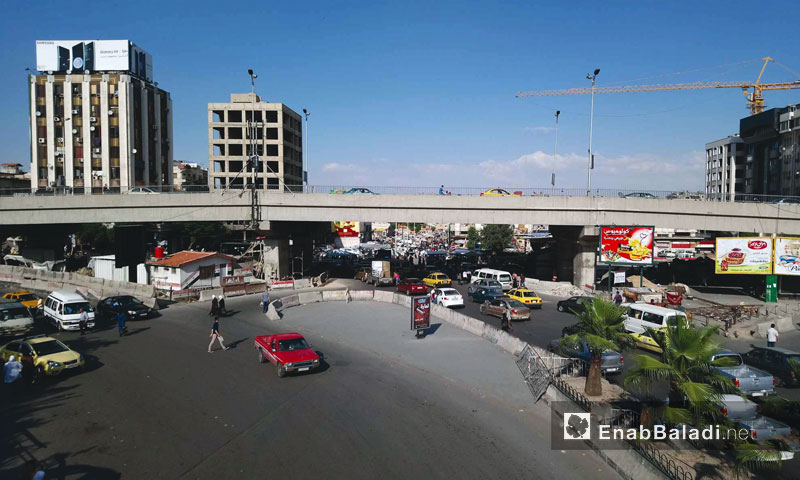
Concrete roadblock of a barrier in al-Thawra Street, the capital Damascus – June 6, 2018 (Enab Baladi)
Opinion poll: The removal of checkpoints is “media propaganda”
Enab Baladi has conducted an opinion poll through its website and its Facebook page on the reasons behind the regime’s removal of dozens of barriers in Damascus.
The newspaper asked the following question: “According to you, what was the reason behind the removal of military barriers in Damascus?”
42% of a total of 630 respondents considered that by removing barriers, the regime wanted to improve its media image, while 37% of them asserted that the end of military operations in the vicinity of Damascus is the reason for that.
21% of the respondents said that the international pressure on the Syrian regime is the reason that pushed it to reduce the barriers in the capital.
Tell us your opinion and experience regarding the removal of barriers in Damascus… what are the possible reasons that preceded this step?
According to you, what was the reason behind the removal of military barriers in Damascus?
- The end of the military operations in the vicinity of Damascus
- The international pressure on the Syrian regime
- A media propaganda aimed at improving the capital’s image
Checkpoints the regime has removed in Damascus
Last month, the residents of the Syrian capital witnessed the removal of dozens of main and secondary barriers in the city of Damascus in fulfilment of the official promises to remove 80% of the capital’s barriers.
The pro-regime newspaper al-Watan said that the operation of reducing the military and security barriers will continue inside Damascus and in its outskirts, in preparation for the complete removal of the barriers, especially the ones that cause traffic jam inside the capital.
Al-Watan pointed out that 21 barriers were removed during June. The newspaper added that the operation of reducing the number of barriers will continue until the complete removal of all of them, including the barriers of the forces affiliated to the “National Defence and the Popular Committees.”
Local sources told Enab Baladi that the earth walls and concrete roadblocks that had been part of some of the barriers were completely removed, which improved the appearance of some streets and reduced traffic jam in areas that had experienced daily traffic jams in previous years.
Al-Zablatani
Al-Hal market barrier in the al-Zablatani area is known as the “One Million Barrier” because of the imposition of huge sums of money on cars loaded with goods from al-Hal market. Al-Assad’s forces have set up an alternative barrier on the road that leads to the al-Dabaghat bridge which in itself leads to Eastern Ghouta. They have also removed several barriers and security checkpoints in the area up to the Abbasids Square.
Rukneddine
Ibn al-Nafees barrier, which leads to Faiha highway, was removed. The Air Force Intelligence Directorate, which controls the area’s barriers, kept the secondary barrier from the side of Assadeddin Rd.
Old Damascus
Bab al-Jabiyah barrier, from the side of al-Badawi Street, which is affiliated to the Palestine Branch of the Military Intelligence Directorate, was removed. At this barrier, hundreds of civilians had been arbitrarily arrested during the years of the revolution. The barriers of al-Hariqah and Midhat Pasha were also removed. However, the Palestine Branch kept some of its security checkpoints and detachments in and around the area, including the barrier of Nafus, Bab al-Jabiyah and the barrier at the entrance to al-Shaghour neighbourhood.
Kafr Sousa
They are barriers affiliated to the “Military Security – 215 Division.” The barriers of Kafr Sousa and the southern junction have been removed towards Cham City Centre Mall and towards the Carlton Circle, but the biggest checkpoint near the Cham City Centre Mall is still present.
Tahrir Squar
The barriers of this area are affiliated to the Air Force Intelligence Directorate which shares with the National Defence some of its checkpoints and patrols in the area. Tahrir barrier, which leads to Aleppo street, is known for its security tightening on passengers, and its positions are greatly fortified due to its proximity to axes of clashes in Jobar neighbourhood.
The area faced bombing attacks in early 2013, which forced the regime to increase the number and the fortification of the barriers.
With the removal of al-Ghadeer barrier from the side of Bab Tuma after four years, along with the removal of four barriers around Baghdad Street and al-Adawi Street, the road from Baghdad Street to Abbasids Square, through Tahrir Square and up to Bab Tuma area, has become fully open.
Dummar area
In this area, four barriers at the entrances of Dummar and the Dummar Project area, have been removed. The barriers are those of “al-Kanisa, Taameer, Cleopatra, Rabwa.” Most of the area’s barriers are directly affiliated to the Republican Guard and some others are affiliated to the National Defence.
At this area’s barriers, thousands of young people from nearby areas, which lead to the capital’s northern and western countrysides, have been arrested.
Barzeh
The road leading from Barzeh to Hamish Highway and to Tishreen Military Hospital has become accessible following the removal of the barriers and barricades from the area, after being closed for four months. However, the road from Barzeh to the towns of Maaraba and al-Tall has not been opened yet.
Ish al-Warwar
Ish al-Warwar barrier is known for imposing taxes on those leaving Damascus to the towns of Western Qalamun. It is run by the National Defence militia. In terms of security, the area is affiliated to the Political Security Directorate.
This is one of the most security-tightened barriers as it is a main checkpoint between the capital and the countryside, in light of the closure of Harasta international road for many years as a result of conflicts in Ghouta.
The most recently removed barriers by the Syrian regime are those of Khalid Bin al-Waleed, the old al-Zahera and the two barriers of Bab al-Musalla which are close to the Criminal Security Branch, towards the garages of Sayyidah Zaynab and Bab al-Musalla Roundabout.
The regime’s media outlets have recently announced the removal of al-Mujtahid barrier. However, Enab Baladi’s reporter denied this and confirmed the decrease in the number of the officers stationed at the barrier.
if you think the article contain wrong information or you have additional details Send Correction
النسخة العربية من المقال
-
Follow us :












 A military checkpoint in Bab al-Jabiyeh, Damascus - April 12, 2017 (taken by Damascene young man)
A military checkpoint in Bab al-Jabiyeh, Damascus - April 12, 2017 (taken by Damascene young man)





 A
A
A
A
A
A
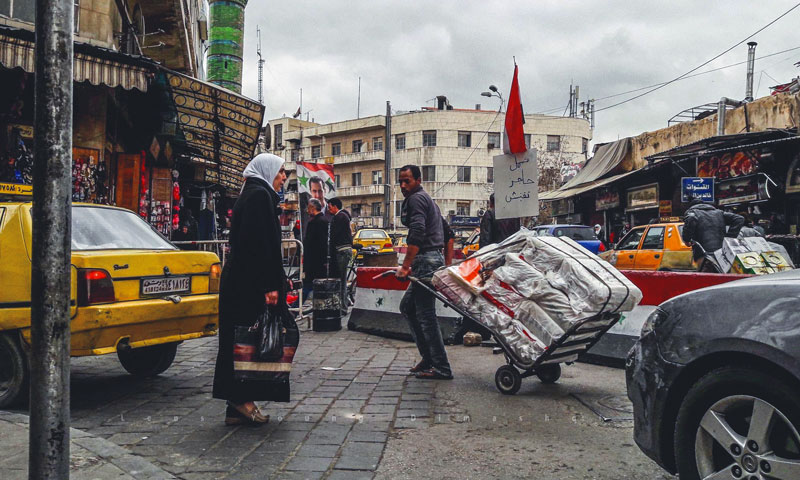
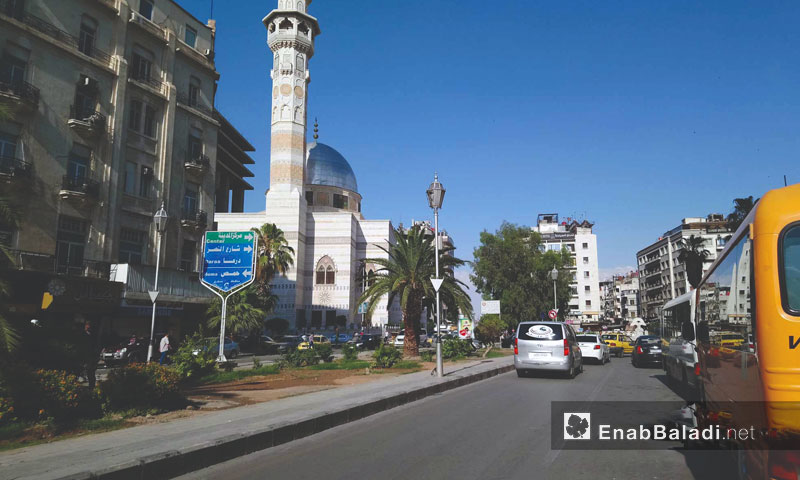



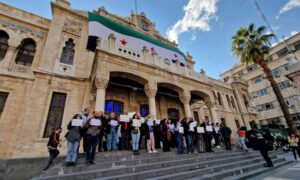
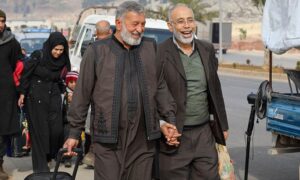

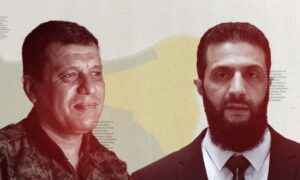
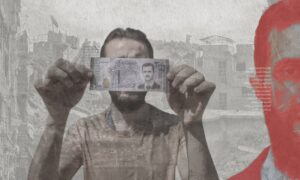
 More In-Depth
More In-Depth